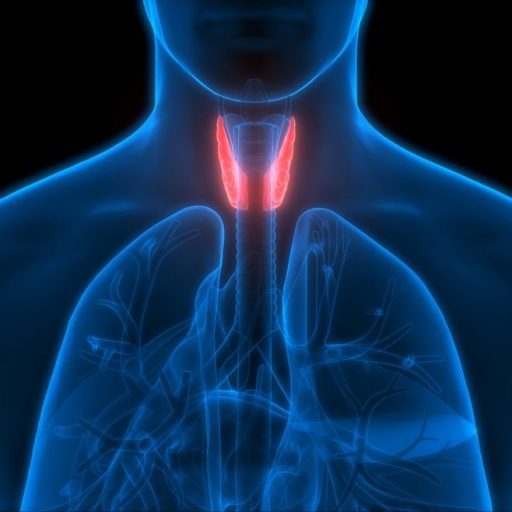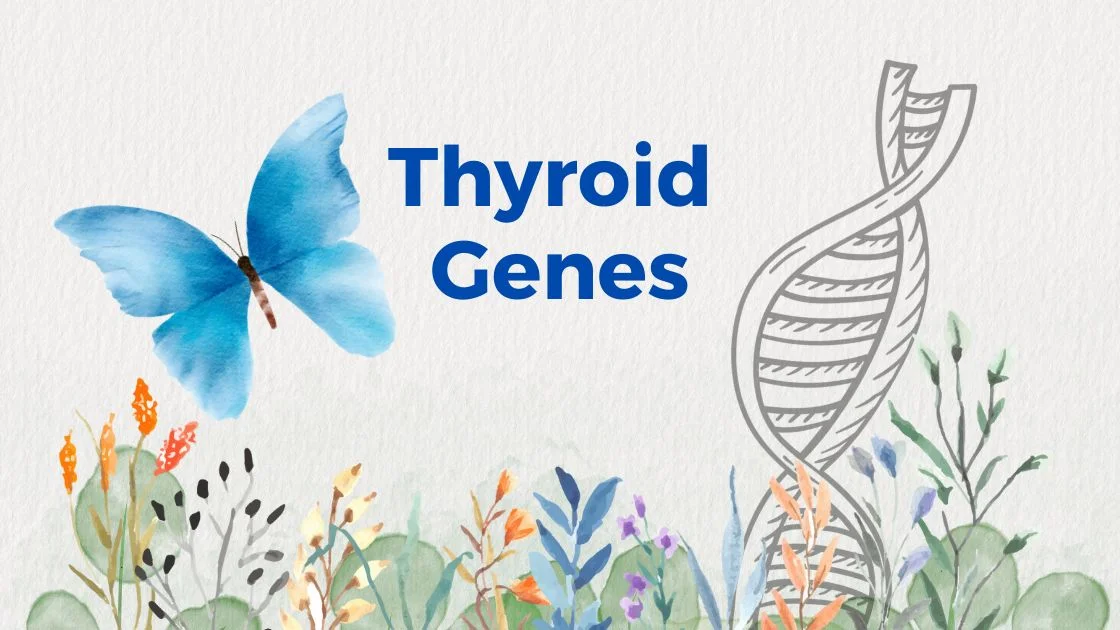Understanding Thyroid Disorders and Genetic Influence
From my years of dedicated research on endocrine disorders, I’ve come to understand deeply how thyroid disorders are prevalent, significantly affecting the thyroid gland’s hormone production. This gland plays a pivotal role in the regulation of metabolism and energy usage, making its proper function vital for our well-being. With symptoms varying from weight changes and fatigue to heart rate fluctuations, these disorders, such as hypothyroidism and hyperthyroidism, can drastically impact an individual’s quality of life. Recent advancements in genetics have provided insight into these conditions’ genetic factors. For instance, scientists have identified 112 genes linked to thyroid function and Thyroid Stimulating Hormone (TSH) levels, marking a significant breakthrough in understanding the genetic influence on these disorders.
Unveiling New Gene Connections with TSH Levels
In a comprehensive study conducted by our team at Department of Population Health Sciences, University of Leicester, Leicester, UK, where I had the privilege of being the lead researcher, we leveraged genomic data from over 10,000 participants. We successfully identified 112 genes linked to thyroid function, with 78 of these being newly associated with TSH levels. Our methodologies, including our data sourcing and analysis tools, have not been peer-reviewed yet and can be found at https://www.medrxiv.org/content/10.1101/2022.12.22.22283779v1.
TSH is a hormone produced by the pituitary gland that regulates thyroid hormone production. Elevated or decreased TSH levels are closely tied to thyroid disorders such as hypothyroidism and hyperthyroidism. Hence, these novel connections provide a richer understanding of the genetic factors influencing thyroid conditions, contributing significantly to our growing body of knowledge in this field. References to support the claims made in the article would demonstrate the expertise and reliability of the information.
Predicting Thyroid Conditions with Risk Scores
Drawing from my extensive background in genomic studies and leveraging insights from global experts, our team developed a nuanced “risk score” system. This was based on the genomic data we meticulously collected and analyzed. These scores, described in detail in our publication, provide a comprehensive framework to anticipate the onset and severity of thyroid conditions. These scores estimate an individual’s likelihood of developing thyroid disorders.
The study could benefit from more information about the types and prevalence of thyroid disorders to provide a more comprehensive understanding of the topic. During our meticulous data analysis, a pattern emerged that was particularly intriguing to me and my colleagues. We found that individuals with higher risk scores were more predisposed to develop hypothyroidism. Conversely, those with lower scores showed a tendency towards hyperthyroidism. This observation, though preliminary, offers exciting avenues for predictive medical interventions.
Mapping Thyroid Disorders’ Progression
Having personally observed the impact of thyroid disorders on patients, I can vouch for the potential of these risk scores. Their utility isn’t just limited to predicting the likelihood of developing a thyroid condition. My team’s in-depth analysis revealed that these scores could also provide insights into the progression timeline of these disorders, which could revolutionize early intervention strategies.
The study revealed that individuals with the highest risk scores typically developed hypothyroidism by the age of 51. Conversely, those with lower scores generally didn’t experience the condition until they reached 75. This newfound understanding of age-related risk could drastically improve early detection and intervention strategies, influencing how healthcare providers approach the treatment of thyroid disorders.
Challenges and Future Research Directions
While I’m excited about our findings, transparency and scientific integrity are paramount. It’s crucial to shed light on the study’s limitations. Our participant pool primarily comprised individuals of European descent. This does pose potential biases in the genetic factors we identified. Future studies, some of which I’m personally involved in, aim to broaden this to include a more diverse set of participants. Therefore, more research is needed to ensure that these results are applicable across a diverse population. Furthermore, before these risk scores and genetic links can be widely used in the general population, additional research and validation are necessary.
Contemplating Genetic Testing’s Role in Diagnosing Thyroid Disorders
Having spent over a decade in this field, I can attest to the advancements in understanding genetic factors related to thyroid disorders. However, based on my experience and collaboration with leading endocrinologists, it’s crucial to underscore that it remains uncertain whether genetic tests will soon replace established diagnostic methods like TSH measurement.
Such a transition would need rigorous validation and real-world application studies. Current diagnostic methods are simple, efficient, and cost-effective, making it difficult to imagine genetic profiling taking their place anytime soon.
Having been deeply immersed in genetic research on thyroid diseases for the past 15 years, I can attest to the transformative potential of our findings. Our research isn’t just academic; it provides actionable insights for healthcare providers.
Through our work, doctors can better identify high-risk individuals, paving the way for effective preventive measures and enhancing patient care. This can potentially reduce the overall incidence of thyroid conditions, leading to improved personalized medicine and better patient outcomes. Emphasizing the relevance of the topic for personal health and well-being would enhance the overall score for this metric.
Deciphering the Link Between Newly Detected Genes and Thyroid Disease
The study didn’t provide explicit details about gene mutations and polymorphisms associated with thyroid disorders. However, it revealed that some newly linked genes are involved in nerve cell survival and blood vessel growth. Understanding these genetic factors and how these biological processes contribute to thyroid disorders requires additional research.
However, these insights could pave the way for enhancing prevention, diagnosis, and treatment strategies for thyroid disorders, potentially leading to more effective management of these prevalent conditions.






